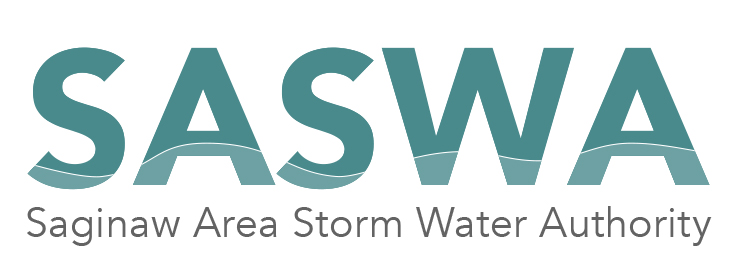Watersheds: What are they? And how do they relate to stormwater?
A watershed is a portion of land where all the water from precipitation and snow melt flows into one common point known as an outlet. Watersheds are created by the landscape’s natural high and low points. The water is “funneled” from higher elevations to lower elevations where it continually meets up with other moving water to create larger and larger flows. This is why in more mountainous areas; lower flow streams are found closer to the mountain top whereas higher flow rivers are found towards valleys. This is illustrated well in Figure 1 as the streams start out small towards the top but grow larger as they move downward and conglomerate into one large river.
“What Is a Watershed?” The Watershed Project, 2023, https://thewatershedproject.org/what-is-a-watershed/. Accessed 5 May 2023.
The Saginaw region has several different watersheds which control the direction/flow of water and make up the Saginaw Bay Watershed. The larger Saginaw Bay Watershed is composed of the Saginaw, Pigeon-Wiscoggin, Au Gres-Rifle and Kawkawlin-Pine watersheds. These four watersheds all begin closer to the interior of the state and empty into the Saginaw Bay where they feed Lake Huron. Figure 2 details these four watersheds that control the drainage in the Saginaw area.
Estimating Spatial Distribution of Point and Nonpoint Sources Pollution Loadings in the Saginaw Bay Watersheds - Scientific Figure on ResearchGate. Available from: https://www.researchgate.net/figure/Boundaries-of-the-Saginaw-Bay-Basin-and-sub-watersheds-in-the-state-of-Michigan-USA_fig1_260036648 [accessed 5 May, 2023]
Stormwater is a term used to describe runoff supplied by precipitation events. Once on the ground, stormwater can be very problematic as it takes up pollutants and transports them downstream very efficiently. Stormwater runs off in the direction of its watershed. If there is pollution within an upland area, stormwater is in danger of transporting it down the watershed and contaminating additional resources. This is especially true in the present day with all the impermeable surfaces like concrete or asphalt. These surfaces block the water from entering soil and being filtered properly. This is the reason so much time and work need to be put into the storm sewer system. It is important that stormwater stays clean throughout its trip across the watershed for the safety of the people further along its path.


